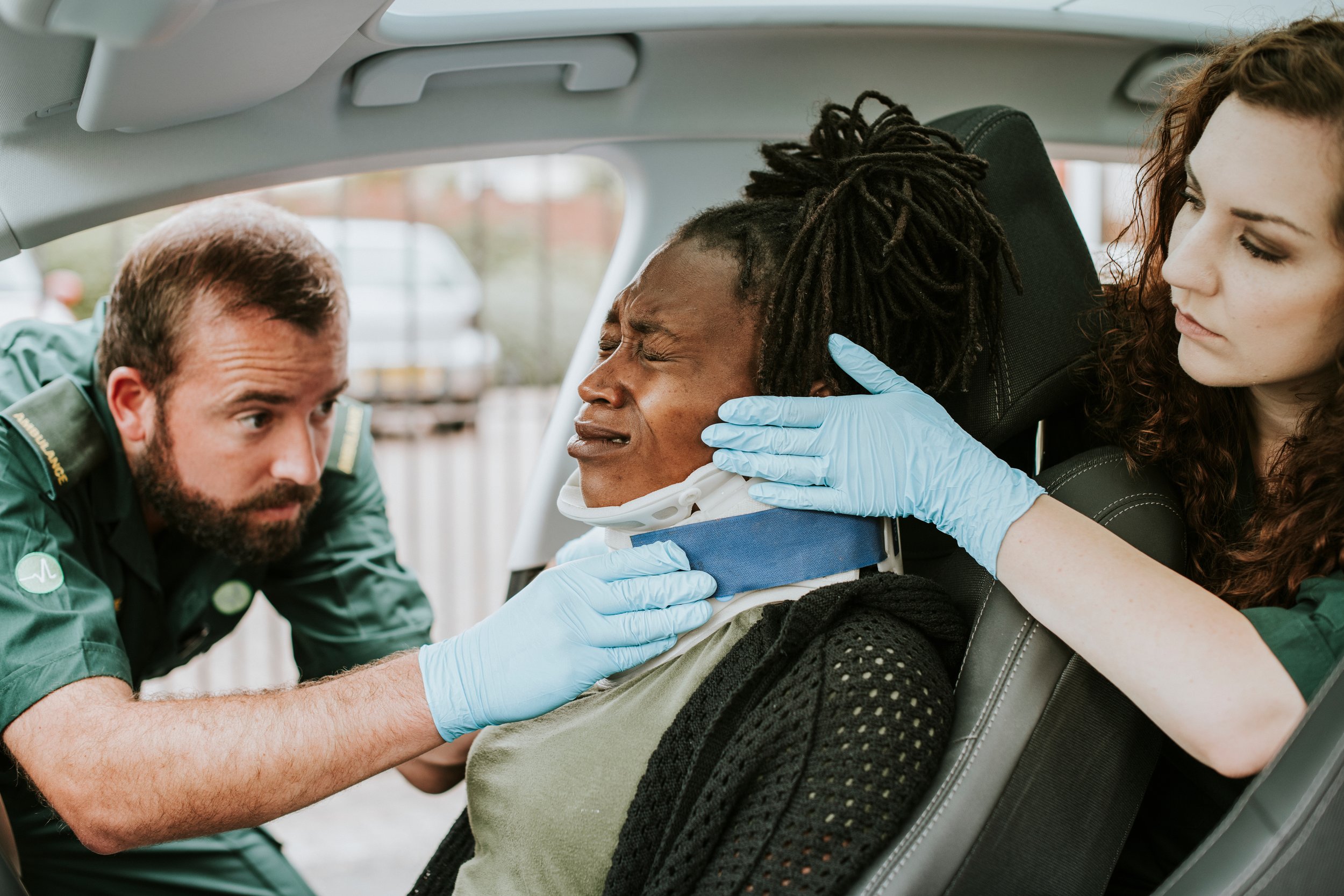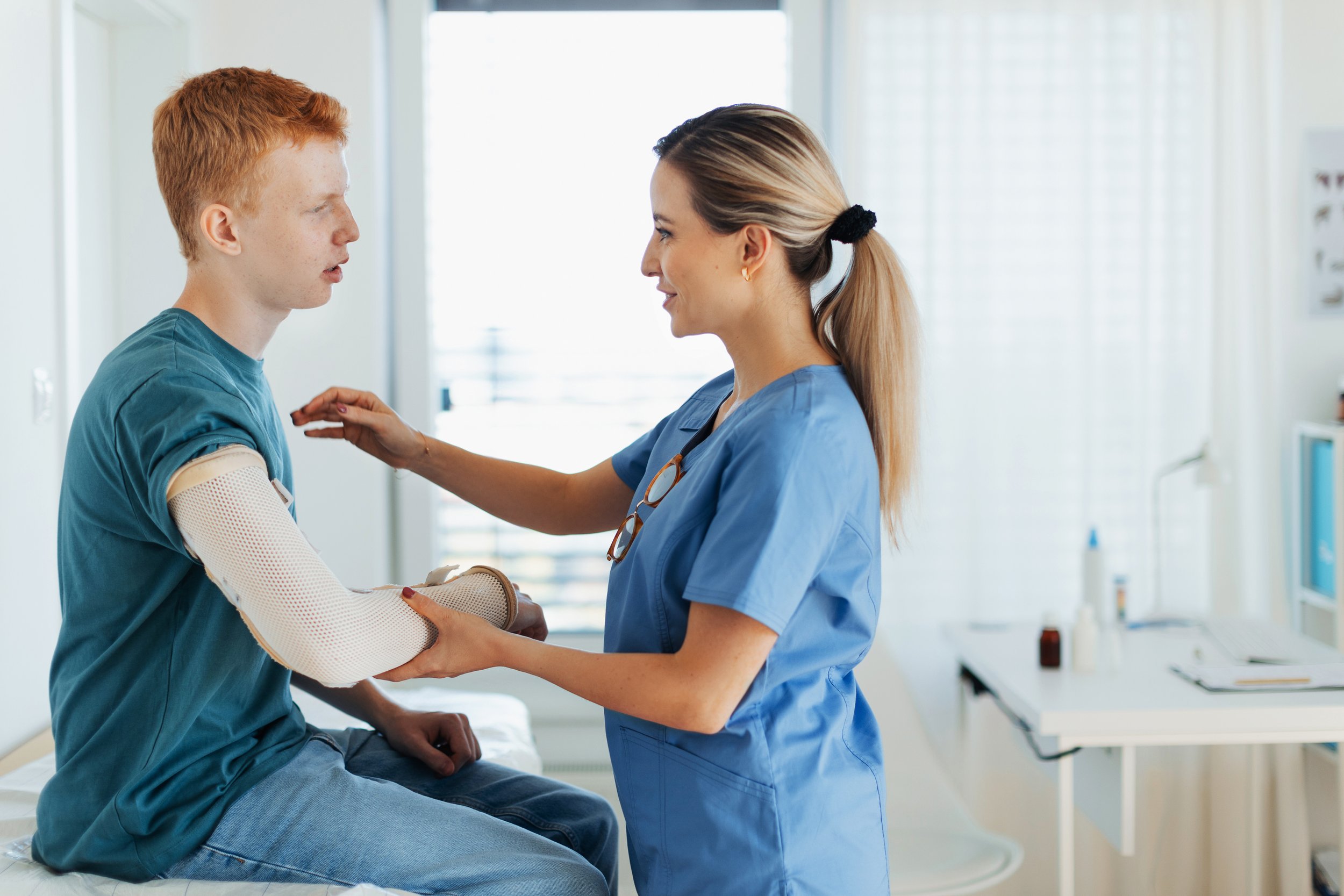
Common Auto Accident Injuries and How to Treat Them: Your Guide to Auto Accident Injury Treatment
Auto accidents are one of the leading causes of injury worldwide. From minor fender-benders to severe, life-threatening collisions, the physical harm can vary depending on the severity of the accident. The aftermath of such accidents can result in both immediate and long-lasting effects on the body and lead to chronic pain or permanent disability if these injuries are not properly addressed. Common injuries following a car accident include whiplash, bone fractures, soft tissue damage, spinal injuries, and head trauma, all of which require specific care to ensure optimal recovery. Understanding the nature of these injuries and the best treatment options available is crucial for minimizing their impact and promoting healing. In this blog, we will explore the most frequent auto accident injuries, the signs you should watch out for, and the essential treatments to seek out for the best recovery.

Common Auto Accident Injuries
1. Whiplash
Whiplash is one of the most common injuries following an auto accident, particularly in rear-end collisions, where the sudden jerking motion of the head (Thrust forward and back) can cause significant strain on your muscles, ligaments, and tendons in the neck. This forceful movement leads to soft tissue damage, which can result in a variety of symptoms that affect the neck and surrounding areas. If you’ve suffered whiplash, you can experience neck pain, stiffness, along with headaches, dizziness, and discomfort in your shoulders or upper back. In some cases, the injury may also limit the range of motion in your neck, making it difficult to turn or tilt your head. These symptoms can range from mild to debilitating. While some people can improve within a few weeks, others may require extended medical treatment for a full recovery.
Auto Accident Injury Treatment after Whiplash:
-
Rest and Ice: Apply ice to the neck for 15–20 minutes at a time during the first 48 hours to reduce inflammation. This numbs the area and reliefs acute pain in your neck.
-
Pain Medication: Over-the-counter anti-inflammatory drugs, like ibuprofen or acetaminophen, can help manage pain. When using these medications, follow the guidelines for the appropriate dosage and consult your doctor if the pain persists
-
Physical Therapy: After the initial pain subsides, physical therapy can restore your strength by strengthening neck muscles and improving your mobility to help you in your long-term recovery.
-
Heat Therapy: When your swelling has decreased, applying heat to the neck can relax tight muscles and improve your blood flow. Using a warm compress or heating pad for 15–20 minutes at a time can reduce muscle tension, ease discomfort and promote healing. Be sure to only do this once the swelling has subsided and to use moderate temperatures to avoid burns

2. Fractures and Broken Bones
Bone fractures can happen after auto accidents due to the high impact and force of the collision. The bones most frequently fractured in car accidents include the ribs, arms, legs, and collarbones, which are vulnerable to the sudden, intense pressure exerted during the crash. Bone fractures are usually felt immediately after the accident through intense pain at the site of the injury. Other signs of bone fractures are swelling and bruising around the affected area; more severe cases can lead to visible deformity or misalignment of the bone. Broken bones also lead you to experiencing difficulty moving the affected limbs or bearing weight, particularly in the arms and legs. If you’ve suffered bone fractures, medical attention immediately, as they can lead to long-term complications if not properly treated.
Auto Accident Injury Treatment for Fractures:
-
Immobilization: A cast, brace, or splint is often necessary to keep the bone in place while it heals, particularly for your arms and legs. Keeping the bone immobilized minimizes the risk of displacement and promotes faster recovery. The duration can vary depending on the severity of the fracture.
-
Pain Management: To help relief your pain, your doctor may prescribe strong pain medications such as oxycodone and hydrocodone and muscle relaxants like cyclobenzaprine in the case of muscle spasms. In addition to this, over-the-counter pain relievers can help you manage discomfort.
-
Surgery: Some accidents can lead to displaced or shattered bones, which may require surgery to secure them with metal pins, plates, or screws and keep them in the proper position. If you have to go through surgery, you may need additional immobilization for a full recovery.
-
Physical Therapy: Once your bones have healed, physical therapy helps restore your strength, mobility, and flexibility. Physical therapy typically focuses on exercises to help your muscles recover such as walking, standing or doing partial squats. This leads to gradual muscle recovery to help you return to your daily activities.
3. Concussions
A Concussion occurs when your brain is shaken inside the skull due to the sudden impact of the accident or whiplash. Though the skull may not be visibly injured, the brain can suffer from the impact. This type of brain injury can disrupt normal brain function, leading to a variety of symptoms that can range from mild to severe. Common signs of a concussion include headaches or feeling of pressure in the head, as well as confusion or dizziness; you may also experience nausea or vomiting. Heightened sensitivity to light or noise, and difficulty concentrating are also common following a concussion. These symptoms often resolve within a few days or weeks. However, it is important to take concussions seriously, as they can lead to more complications if not properly managed. Seeking medical attention and resting the brain from physical and cognitive stress are crucial steps in the recovery process to ensure a full recovery and to prevent further injury.
Auto Accident Injury Treatment for Concussions:
-
Rest: Make sure to rest both physically and mentally. Avoid activities that require intense concentration or physical exertion. Avoid tasks such as reading, using a computer or playing video games as well as physical activities like exercising. In addition to this, avoid social interactions or other situations that can lead to stress as this can worsen your symptoms.
-
Gradual Return to Activity: As your symptoms improve, slowly start easing back into your daily activities with simple exercises likewalking or gently stretching. This ensures your brain isn’t overexerted to quickly and avoid prolonged symptoms. Consult with your healthcare professional to determine the best routine for you.
-
Follow-Up Care: Regularly checkup with your doctor. This helps monitor your recovery and modify your recovery plan as needed, especially if symptoms persist or worsen.
4. Spinal Injuries
Spinal injuries following an auto accident can range from mild strains to more severe conditions like herniated discs or fractures. In addition to whiplash, the sudden jolt can cause damage to the vertebrae, discs, or spinal cord, which can affect your mobility and basic functions. Symptoms spinal injuries include severe back and neck pain, numbness, tingling, or weakness in the arms or legs, signaling potential nerve involvement. In more severe cases, you may have difficulty walking or maintaining your balance. In extreme situations, the injury may affect your bladder and bowel control. Regardless of the severity of your symptoms, seek medical help immediately to keep your symptoms from worsening or becoming chronic. Spinal injuries are particularly concerning as they can lead to long-term complications or permanent disability, making prompt diagnosis and treatment critical for your recovery.
Auto Accident Injury Treatment for Spinal Injuries:
-
Immediate Medical Attention: Any suspected spinal injury requires emergency care. Do not move the injured person until professionals arrive to avoid further damage.
-
Bracing or Surgery: Mild injuries may only require a back brace, while severe spinal cord injuries may need surgical intervention.
-
Rehabilitation: Physical therapy will help rebuild strength and mobility after spinal injuries, focusing on improving coordination and range of motion.
Preventing Auto Accident Injuries
While it's impossible to eliminate the risk of auto accidents, there are several proactive steps you can take to significantly reduce your chances of injury. First and foremost, always wear your seatbelt, even on short trips, as it remains one of the most effective ways to protect yourself in the event of a crash. Practicing defensive driving is also crucial—stay alert, anticipate the actions of other drivers, and adjust your speed and position accordingly to avoid potential collisions. Additionally, proper car seat positioning is essential for minimizing injury; adjust your seat to ensure that you're sitting upright with your seatbelt properly fastened across your lap and shoulder, which can help absorb impact in a crash. Finally, avoid distracted driving by keeping your full attention on the road. Refrain from using your phone, eating, or engaging in other distractions that can take your focus off driving, as even a momentary lapse in attention can lead to a serious accident. By following these safety measures, you can greatly reduce your risk of injury on the road.
Visit North Florida Medical Centers Today for Expert Auto Accident Injury Care
If you've been involved in an auto accident, seek professional medical care as soon as possible to ensure proper treatment and recovery. At North Florida Medical Centers, we specialize in treating a wide range of auto accident injuries such as whiplash, concussions, spinal injuries among others. With a personalized, comprehensive approach, our team of doctors, physical therapists, and pain management specialists work together to develop a treatment plan that’s tailored to your specific injuries for a speedy recovery. Whether you're in need of diagnostic testing, physical rehabilitation, pain relief strategies, or surgical interventions, we have the expertise and resources for you. Don't let an injury derail your life. Contact us today to schedule an appointment or consultation and begin your path to healing. We are there for you every step of the way.